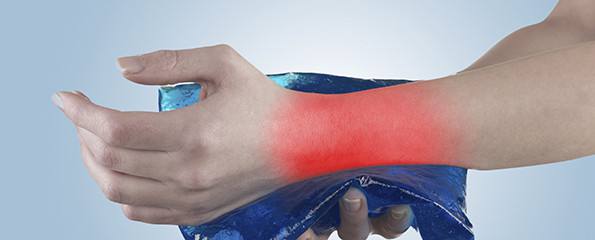Significant step in targeting chronic inflammation
Researchers at the Illawarra Health and Medical Research Institute, based at UOW, have made another major discovery in their search for ways to prevent diseases involving chronic inflammation such as Alzheimer’s disease, vascular disease and rheumatoid arthritis.
In a paper published in the prestigious Proceedings of the National Academy of Sciences USA, IHMRI researchers, Dr Amy Wyatt and Professor Mark Wilson, together with collaborators at the University of Cambridge (UK), provide exhaustive evidence that hypochlorite, a type of ‘oxidant’ produced by immune cells, can be used to activate a helpful ‘chaperone’ protein which targets damaged proteins for disposal.
Molecular chaperones are vitally important in repairing or clearing damaged proteins known to accumulate in disease. Several years ago the team discovered that the alpha-2-macroglobulin (A2M) protein is a chaperone particularly important when the body is in an inflammatory state.
In this current study they show that, by chemically modifying A2M with hypochlorite, they could dramatically increase its activity. In the future, it may therefore be possible that this effect could be harnessed to protect the body from serious inflammatory pathologies.
“When hypochlorite is produced, the body sustains ‘collateral damage’, particularly to proteins,” explained Professor Wilson, one of the world’s leading experts in the emerging field of extracellular protein quality control.
“This accumulation is a hallmark of inflammatory processes in Alzheimer’s disease, atherosclerosis [vascular disease], arthritis and many other debilitating disorders.
“In the present study, we show that the chaperone activity of A2M is dramatically increased following hypochlorite-induced structural modifications. Therefore, it is certainly possible that we may be able to develop a drug that can switch on the chaperone activity of A2M to provide greater protection when it is needed.”
Given the large number of diseases in which damaged proteins and inflammatory pathologies coexist, the significance of the findings may be far-reaching and, to the researchers’ knowledge, no comparable mechanism for mammalian chaperone activation has previously been described.
This is the third major discovery reported by IHMRI researchers in the past three months following the establishment of a new Proteostasis and Disease Research Centre (PDRC) at IHMRI, led by Professor Wilson and 10 other senior researchers.
Dr Wyatt is a PDRC member and a recipient of a prestigious National Health and Medical Research Council Fellowship. She has spent the past two years working with Professor Christopher Dobson (joint corresponding author with Professor Wilson) in the Department of Chemistry at the University of Cambridge.
“Dr Wyatt originally identified the unique relationship between hypochlorite and A2M chaperone activity and was provided with invaluable intellectual guidance and practical support in Cambridge by Professor Dobson,” added Professor Wilson, who also at UOW’s Centre for Medical & Molecular Bioscience.
“While we have collaborators around the world, our collaboration with this team is extremely valuable and productive.”
The team will now develop new collaborations with a view to developing drugs suitable for use in humans “to switch on the chaperone activity of A2M when needed to treat disease”.
“This work is likely to take several years and, with luck, will attract funding from sources such as the National Health and Medical Research Council,” concluded Professor Wilson.
(Source: University of Wollongong, Proceedings of the National Academy of Sciences USA)
Dates
Tags
Created by:

 Login
Login














